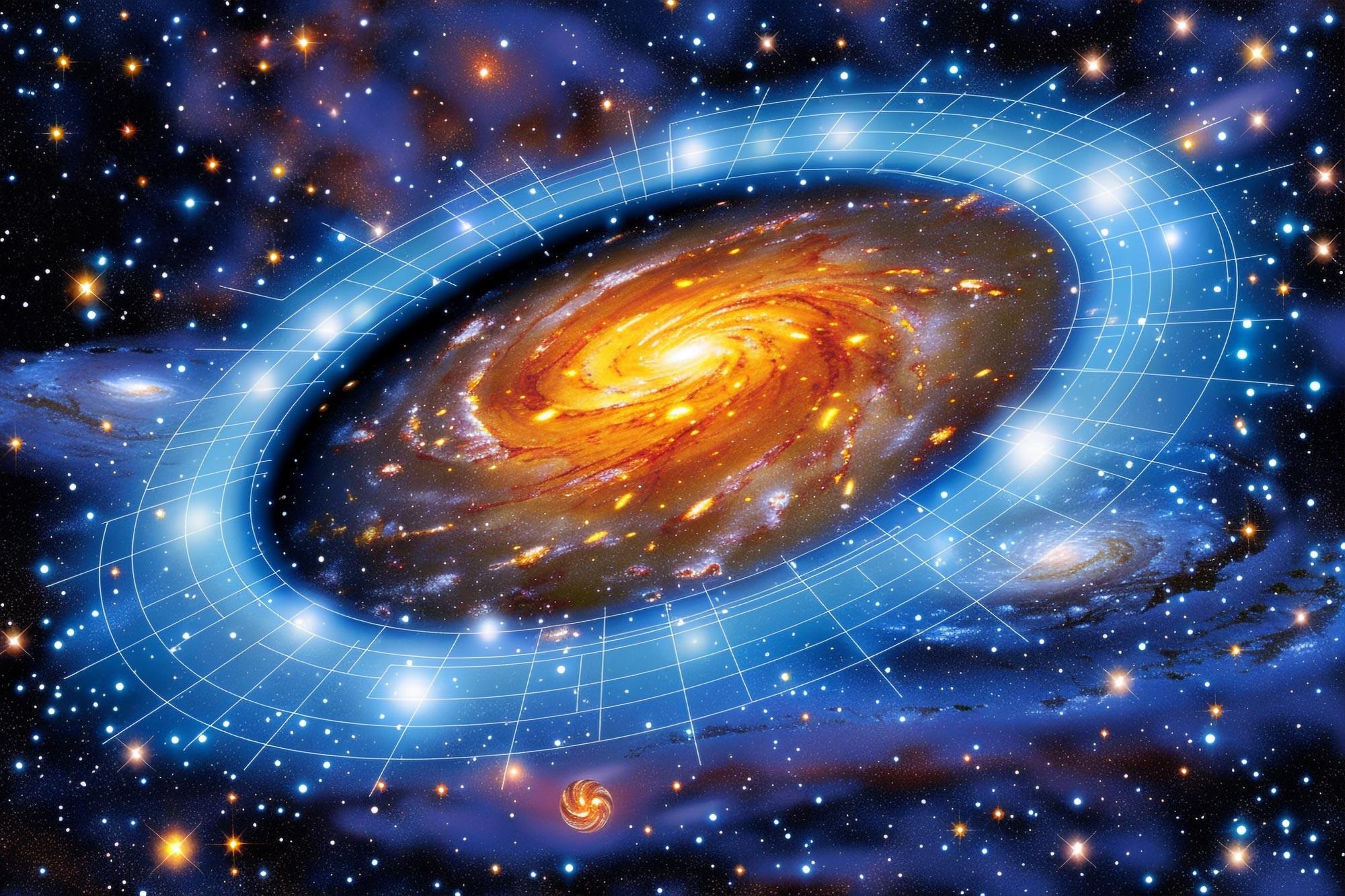Peregrine launched Jan. 8 on the first flight of United Launch Alliance’s Vulcan Centaur.
The spacecraft, though, suffered a propellant leak hours after launch that ruled out any chance of attempting a lunar landing.
The spacecraft instead reentered a week and a half after launch.
Although Peregrine did not reach the moon, many of the payloads on board were tested during the flight.
“In transit, we were going to keep most of those payloads in a survival mode,” said Dan Hendrickson, vice president of Astrobotic, during a March 11 session about the mission at the Lunar and Planetary Sciences Conference here.
“But as our mission deviated, the plan deviated as well, much to the benefit of all the payloads.”While many of the science payloads on Peregrine weren’t able to collect their intended data from the surface of the moon, they were able to be tested in space and, in some cases, perform some science.
Among them was the Linear Energy Transfer Spectrometer (LETS) instrument, which collected data about the cislunar radiation environment rather than on the lunar surface as intended.
“We had to move our operations around to pull data down during the flight,” said Stuart George of NASA’s Johnson Space Center, one of the leaders of the instrument.
“The instrument worked perfectly the whole time.”Another NASA instrument, the Peregrine Ion-Trap Mass Spectrometer (PITMS), also was able to operate during the flight.
It detected traces of nitric oxide and nitrogen dioxide that likely was from the lander’s oxidizer that suffered the leak.
“That transient atmosphere, if you will, of the oxidizer around the spacecraft, that self-induced environment, persisted,” said Barbara Cohen, principal investigator for PITMS at NASA’s Goddard Space Flight Center.
One of the non-NASA payloads on Peregrine was Iris, a lunar rover built by students at Carnegie Mellon University.
“We became a ‘RoverSat’ instead,” said Raewyn Duvall, program manager for Iris.
That included testing out many of the rover’s subsystems and even turning some of its wheels to confirm they worked.
“Everything that we were allowed to test worked.”Astrobotic is currently reviewing the Peregrine mission to determine the root cause of the propellant leak and any changes that might be needed for the company’s larger Griffin lander, which is under development to launch NASA’s Volatiles Investigating Polar Exploration Rover (VIPER) mission.
Hendrickson said after the presentation that the investigation was going well but did not offer a schedule for completing it.
NASA is following that investigation, said Joel Kearns, deputy associate administrator for exploration in NASA’s Science Mission Directorate, during a NASA town hall at the conference March 11.
“Once we have the results of that, NASA will determine what actions we’re going to take in the future,” he said, including any specific changes for VIPER.
“We will look at their failure review board findings and determine what steps we need to take for VIPER.”Griffin and VIPER were set to launch as soon as this November, but Kearns, speaking at a Planetary Science Advisory Committee meeting March 5, said that will likely slip.
“It is extremely unlikely they will fly before the end of this year,” he said, because of not just the Peregrine investigation but also other work to prepare the rover and lander for launch.
He said NASA would wait to set a new date until after the Peregrine investigation is complete.
A Decade-Long Mystery Is Revealed by the Webb Measurements.
Among the three scientific explanations offered by the U.S. s. In order to provide an accurate estimate of the universe’s expansion rate, Congress commissioned the construction of the Hubble Space Telescope. Huge uncertainties were found in ground-based telescope observations prior to Hubble’s 1990 launch. The universe could be anywhere from 10 to 20 billion years old, depending on the rate of expansion. Hubble’s reduction of this value over the last 34 years has brought it closer to one percent accuracy. This has been achieved by measuring Cepheid variable stars, the gold standard of cosmic milepost markers, in order to improve the so-called “cosmic distance ladder.”.
For ten years, cosmologists have been baffled by the findings, though. The universe is currently expanding faster than expected based on observations of how it appeared soon after the Big Bang, according to the best Hubble measurements. These findings came from the Planck satellite mapping of the cosmic microwave background radiation, which served as a kind of blueprint for the structure and evolution of the universe after the Big Bang.
The simplest way to approach the problem is to suggest that there may be a small but persistent error in the deep-space yardstick used by Hubble to interpret its observations. The James Webb Space Telescope was then developed to confirm Hubble’s findings. Hubble data was consistent with Webb’s crisp infrared images of Cepheids. Webb verified that the keen eye of the Hubble telescope had been correct all along.
Essentially, cosmologists continue to find the so-called “Hubble Tension”—the difference between the expansion of the early universe and what occurs in the nearby universe—to be a fascinating riddle. We may be missing something that is woven into the fabric of space.
Universe’s Expansion Rate Is Confirmed by NASA’s Webb and Hubble Telescopes, But Mysteries Remain.
You should double check your homework when you are attempting to solve one of the greatest mysteries in cosmology. Astronomers are baffled by the “Hubble Tension,” or the fact that the universe is expanding faster than they would have predicted given the beginnings of the universe and our current understanding of its evolution.
Researchers routinely discover a number that deviates from expectations based on observations from the European Space Agency’s (ESA) Planck mission, utilizing NASA’s Hubble Space Telescope in addition to numerous other telescopes. Is this discrepancy the result of measurement errors between the two different methods used to calculate the rate of expansion of space, or does it require new physics to resolve?
Astronomers hope to dispel any remaining doubts regarding Hubble’s accuracy after 30 years of measuring the universe’s expansion rate. The argument that something other than measurement errors is affecting the expansion rate is strengthened by the recent joint measurements produced by NASA’s James Webb Space Telescope and Hubble.
Adam Riess, a physicist at Johns Hopkins University in Baltimore, stated, “With measurement errors negated, what remains is the real and exciting possibility we have misunderstood the universe.”. Riess was co-discoverer of the acceleration of the universe’s expansion, which is attributed to a mysterious phenomenon known as “dark energy,” for which he was awarded a Nobel Prize. “.
An initial Webb observation in 2023 served as a crosscheck to ensure the accuracy of Hubble measurements of the expanding universe. Nonetheless, in an attempt to reduce the Hubble Tension, some scientists conjectured that as we probe further into the cosmos, invisible measurement errors might enlarge and become apparent. In particular, there may be a systematic impact on brightness measurements of farther-off stars due to stellar crowding.
These extra Webb observations of Cepheid variable stars—important cosmic milepost markers—allow the SH0ES (Supernova H0 for the Equation of State of Dark Energy) team, under the direction of Riess, to correlate the Hubble data with the object analysis.
“We can exclude a measurement error as the source of the Hubble Tension with very high confidence, as we have now covered the entire range of what Hubble observed,” Riess stated.
Hubble was successfully able to establish the fidelity of the first rungs of the so-called cosmic distance ladder with the team’s initial set of Webb observations in 2023. Refer to the illustration below. ( ).
Different techniques are used by astronomers, depending on the object they are observing, to calculate relative distances throughout the universe. These methods together are referred to as the “cosmic distance ladder,” since every rung or measurement method depends on the one before it for calibration.
Nevertheless, some astronomers hypothesized that if the Cepheid measurements lose accuracy with distance, the cosmic distance ladder might become unstable as one moves outward along the “second rung.”. These errors may arise from the fact that a Cepheid’s light may mix with that of a nearby star. This effect may intensify with distance as stars cluster together and become more difficult to distinguish from one another.
At ever-greater distances from us to their host galaxies, past Hubble images of these more distant Cepheid variables appear more huddled and overlapping with neighboring stars, posing an observational challenge that needs to be carefully adjusted for. The measurements in visible light are made less certain by interfering dust. Due to its superior infrared vision over Hubble’s, Webb is able to slice through the dust and naturally separate the Cepheids from nearby stars.
The best of both worlds is available to us when Webb and Hubble are combined. The Hubble measurements hold up well as we move farther up the cosmic distance ladder, according to Riess’ findings.
Reaching out to the furthest galaxy where Cepheids have been well-measured, NGC 5468, at a distance of 130 million light-years, are the new Webb observations, which comprise five host galaxies of eight Type Ia supernovae containing a total of 1,000. This covers the entire range where Hubble measurements were taken. We’ve reached the end of the second rung of the cosmic distance ladder, according to co-author Gagandeep Anand of the Space Telescope Science Institute in Baltimore, which looks after NASA’s Webb and Hubble telescopes.
Additional observatories are set up to potentially solve the mystery after Hubble and Webb’s confirmation of the Hubble Tension. NASA’s next-generation Nancy Grace Roman Space Telescope will conduct extensive star surveys in order to investigate the role of dark energy, the enigmatic force responsible for the universe’s acceleration of expansion. An analogous mission is being pursued by NASA-funded ESA’s Euclid observatory.
Now, it seems as though the Big Bang’s afterglow, as determined by Planck’s measurement from the beginning of the universe, is firmly set on one bank of a river, while the distance ladder, as seen by Hubble and Webb, has firmly set an anchor point on the opposite bank. We still haven’t directly observed how the expansion of the universe changed in the billions of years that separated these two endpoints. Riess stated, “We need to see if there is anything we are missing to make the connection between the beginning of the universe and the present day.”.
The Astrophysical Journal Letters published these findings on February 6, 2024.
The paper “JWST Observations Reject Unrecognized Crowding of Cepheid Photometry as an Explanation for the Hubble Tension at 8σ Confidence” was written by Adam G. Riess, Wenlong Yuan, Gagandeep S. Anand, Lucas M. Macri, Andrew Dolphin, Dan Scolnic, Marshall Perrin, and Richard I. * Anderson, The Astrophysical Journal Letters, 6 February 2024.
DOI: 10.3847/2041-8213/ad1ddd.
After more than 30 years of operation, the Hubble Space Telescope is still producing revolutionary findings that influence our basic conception of the cosmos. NASA and ESA are working together internationally on the Hubble project. The telescope is operated by NASA at the Goddard Space Flight Center in Greenbelt, Maryland. At Lockheed Martin Space in Denver, Colorado, Goddard also manages mission operations. NASA manages Hubble and Webb science operations through the Space Telescope Science Institute (STScI) in Baltimore, Maryland.
Space science’s most advanced observatory is the James Webb Space Telescope. Investigating the enigmatic structures and beginnings of our universe and our place within it, Webb is also looking beyond our solar system to far-off worlds orbiting other stars. Leading the Webb program is NASA in collaboration with the Canadian Space Agency and the European Space Agency (ESA).




